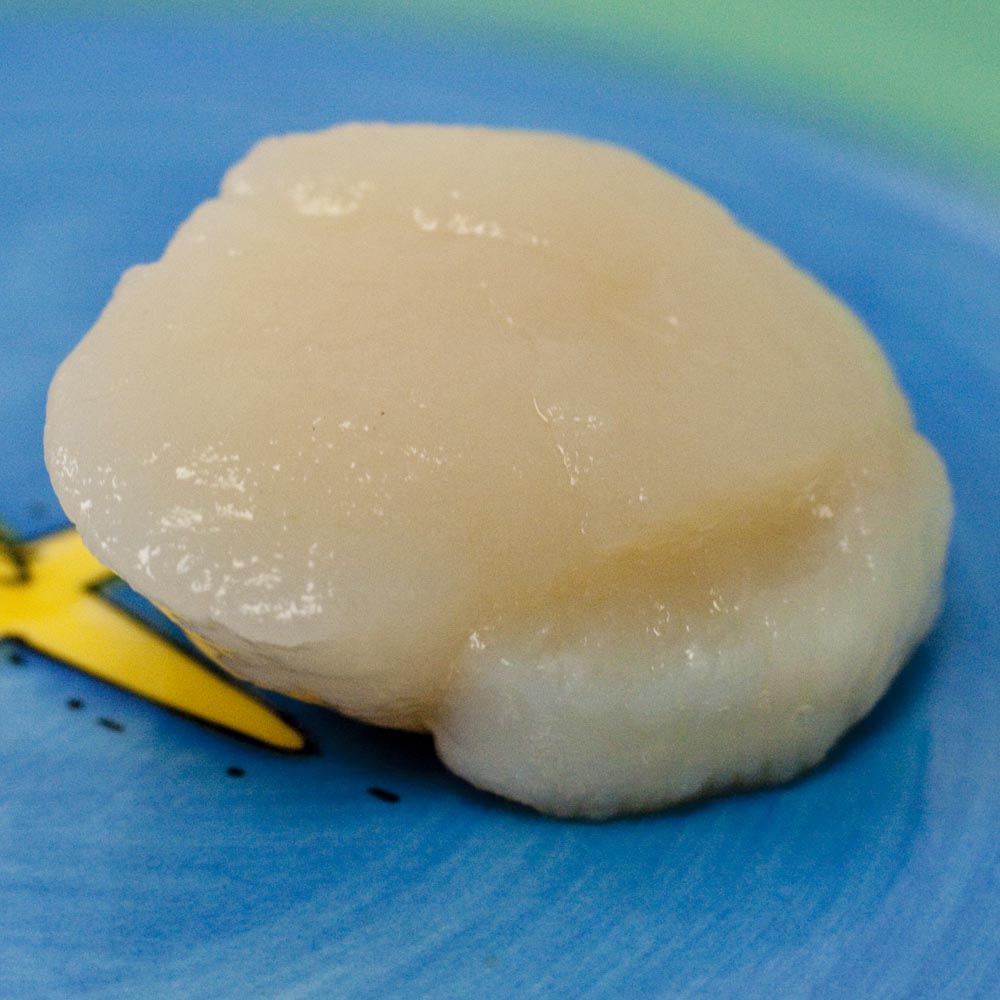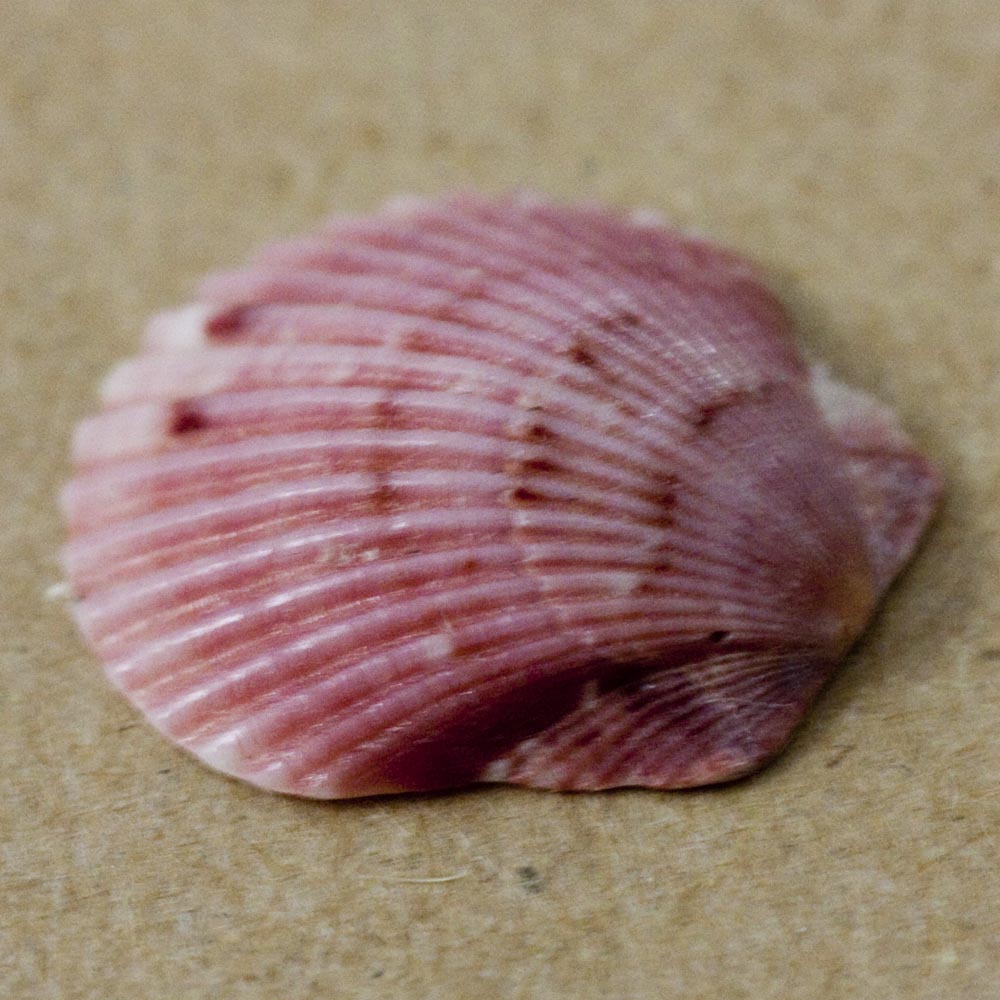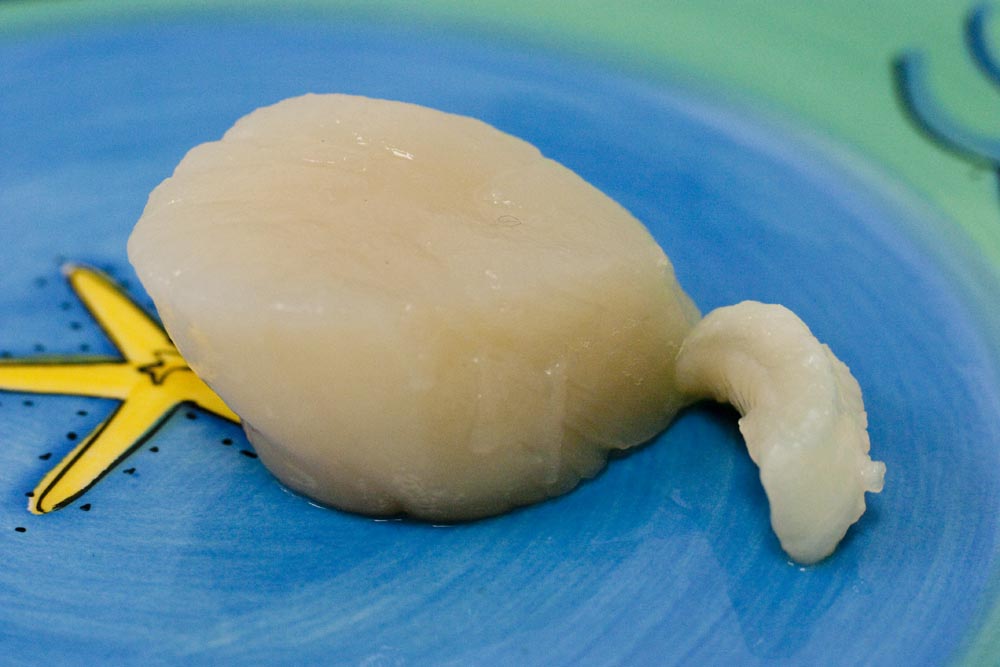What are scallops?
Scallops are bivalve shellfish like clams, oysters and mussels of the mollusk family. This means they have two shells joined by a hinge. What we eat is the muscle that opens and closes the shell, called the “nut”. Compared to other common edible mollusks, scallops have a smooth and tender texture.
Size is the defining factor for splitting into two types: bay or sea scallops. Bays are confined to relatively shallow and protected waters and do not grow much larger than a half-inch across. Sea scallops are open water creatures and can become quite large, even bigger than golf balls. Price increases with size as larger is more rare and difficult to capture.
Preparation is quite easy as they are almost always sold already removed from the shells. There is a small hard band on one side of the nut that is edible but usually removed before cooking and eating. Scallops need only a few minutes to cook because of their smooth and even texture. If they come from known clean waters they can be consumed raw as sushi or used in ceviche(seafood salads “cooked” with citrus juices instead of heat).
Why eat scallops?
Scallops, like many other shellfish, are very nutritious. A single 4-ounce serving contains more than the Daily Recommended Intake of vitamin B-12 and 90% of the DRI for iodine. They are also a very good source of phosphorous, selenium, choline and complete animal protein. Zinc, potassium and magnesium are also present in significant amounts. Many other important nutrients, in smaller amounts, are also available from these tasty shellfish.
Like many other fish, omega-3 fatty acids are plentiful in most shellfish. The omega-3 spectrum of fatty acids plays an important role in preventing heart disease and maintaining overall cardiovascular health. Omega-3’s from fish have been shown to protect against colo-rectal cancer. Whole grains and omega-3’s in combination seem to reduce rates of childhood asthma.
Higher dietary intakes of vitamin B-12 show a preventive effect against many forms of cancer. Iodine is very important for the proper functioning of the thyroid gland. Natural sources of these nutrients, like scallops, are a better way to take advantage of these health benefits than supplement pills.
How to prepare scallops
Start out by choosing fresh scallops. They should be white to very pale amber and look slightly translucent. The surface should be wet/shiny, not dry or cloudy/slimy. The flesh should be firm and rebound to its original shape when pressed. There should be no or very little smell: any ammonia odor or blue tinge is a sign of trouble.
Rinse them with fresh cold water and drain in a colander. Remove the hard band by simply peeling it off by hand. Careful handling will not tear or break them.
Scallops can be cooked many ways. They are delicious when lightly sauteed in olive oil or butter. Baking, broiling or grilling take only moments. Steaming them requires no added fats at all. Ceviche is a popular preparation and depends upon the acids present in citrus juices to “cook” the shellfish. They also make excellent raw sushi because of their delicate flavor and silky texture.
It is all about health
Shellfish can add important variety to a healthy whole food diet. Salt water fish are a great source of many nutrients including complete protein. The iodine in scallops promotes healthy thyroid function and can be difficult to get in sufficient quantities from a wholly land-based diet. More variety also means less boring and a greater likelihood of sticking to a healthy whole food diet. And health is really what life is all about.



